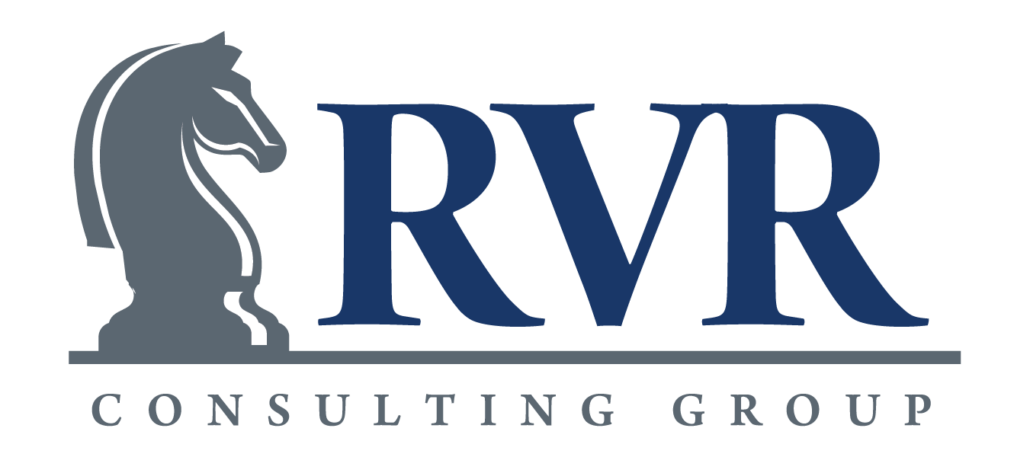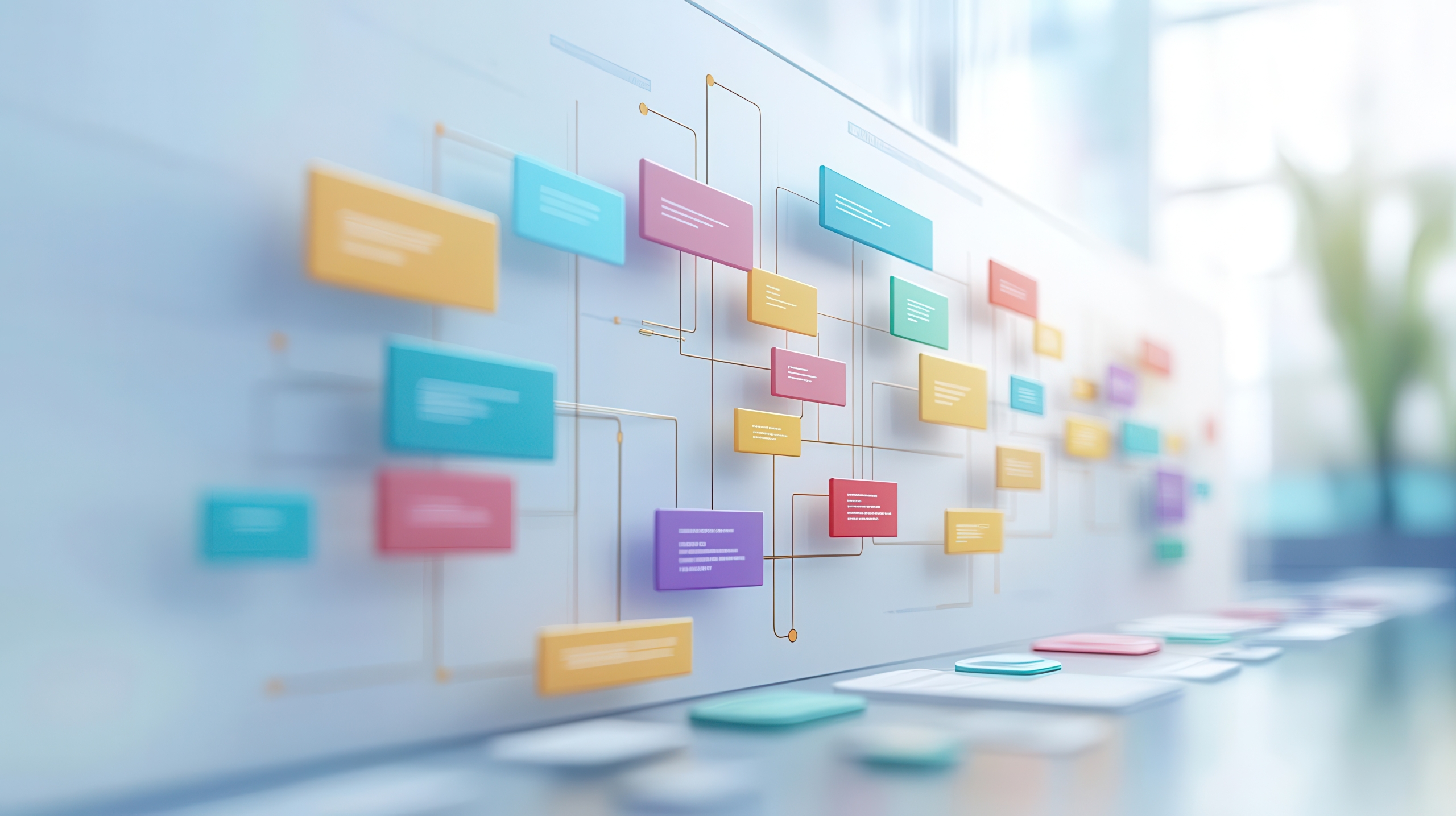Value of Organizational Design:
How to Build the Foundation for a High-Performing Team
Most companies understand that hiring top talent is essential for growth. But fewer recognize that attracting great people is only part of the equation. Without the right organizational structure in place, even the most skilled hires can struggle to thrive. A lack of intentional design before hiring can result in a cascade of issues, including role confusion, misaligned expectations, and diminished team performance. These challenges are not necessarily a reflection of a team’s talent, but rather a symptom of the system in which they operate.
At RVR, our mission is to help businesses create more than just a place to work. We help you build a structured environment where talented individuals can excel. This strategic process is known as organizational design.
What Is Organizational Design and How Does It Help You Grow?
Organizational design is the deliberate process of structuring your teams, roles, and workflows to achieve strategic goals, drive performance, and ensure long-term success. It’s the blueprint for how your business operates, defining everything from how decisions are made, how roles evolve, and how performance is measured. For a business owner, this means creating a system where every piece works together toward a common objective.
This isn’t merely about creating an org chart; it’s about building a robust operating model. Done well, organizational design transforms into a powerful and strategic tool. Proper Organizational Design:
- Helps you hire more effectively by clarifying exactly what you need in each role.
- Accelerates talent development by providing clear pathways for growth.
- Increases retention by giving your best people a clear purpose and a path forward.
Without an intentional structure, even your most talented employees can struggle with a lack of clarity, leading to wasted potential, missed opportunities, and a low return on your most significant investments: your people.
Key Components of a Functional Organizational Structure
A well-defined organizational structure is the foundational blueprint for clarity and scale within a company. It’s far more than just a chart of ‘who reports to who”; it’s a strategic tool that helps leaders and employees alike understand who is responsible for what, how teams collaborate, and what a clear path for professional growth looks like.
A functional structure reveals how each role fits into the bigger picture, and critically, it uncovers potential gaps or inefficient overlaps in responsibility before they can become major roadblocks to progress.
This structure also serves as the framework for the most critical components of the employee’s experience:
- Detailed Job Descriptions: Instead of a simple list of tasks, a functional structure allows for the creation of job descriptions that define specific responsibilities, required skills, and the role’s direct impact on the company’s goals. This precision helps you attract the right talent from the start and gives new hires a clear understanding of what success looks like from day one.
- Equitable Compensation & Bonus Structures: A clear organizational design provides the basis for building competitive and fair compensation levels. By tying pay and bonus structures directly to a role’s responsibilities and its value to the company, you ensure consistency across departments and create a strong incentive for high performance. At the same time, you are outlining increased compensation in successive roles for a known path towards progression for your employees.
- Consistent Performance Management: With a clear structure in place, you can establish consistent systems for managing expectations. This includes defining clear Key Performance Indicators (KPIs) and outlining success metrics that are specific to each role. Tying direct accountability to KPIs benefits the business and allows you to have a clear understanding of induvial performance.
By aligning all these components with the company’s strategic goals, it becomes not only easier to hire the right people but also to empower them to succeed and grow from day one.
Designing for Growth: Development and Progression Paths
Hiring is only the first step; retaining and developing great people is what truly drives a company forward. This is why organizational design also includes building clear progression plans so employees know exactly how they can grow within the company. These aren’t just vague promises; they are tangible roadmaps that outline how a person can move from one level to the next.
These plans detail the specific components of growth: what technical and leadership skills they need to develop, what performance milestones they must achieve, and how their progress will be evaluated.
This intentional design creates a culture of continuous development. Instead of waiting for an annual review, many companies implement monthly or quarterly check-ins specifically to review progress against these plans, providing regular feedback and guidance. Consistent evaluation creates momentum and keeps employees engaged, motivated, and aligned with their career goals.
Aligning Organizational Design with the Employee Lifecycle
A thoughtful organizational design improves every phase of the employee lifecycle, from recruitment all the way through offboarding.
During the hiring phase, companies should define more than just the job title. They need to identify the ideal candidate profile, including the necessary technical skills, soft skills, education, and experience. A standardized interview process helps ensure every candidate is evaluated fairly and consistently, while role-specific assessments can help confirm alignment before an offer is made.
Once hired, employees benefit from structured onboarding and role-specific training. This includes clearly articulated responsibilities, timelines for success in the first 30, 60, and 90 days, and continuous development opportunities thereafter.
Ongoing development should be part of every employee’s experience, with access to coaching, training, and clear pathways for promotion. Performance reviews should be consistent across departments and tied directly to both individual and organizational goals.
Succession planning is another often-overlooked component of organizational design. Knowing who can step into key roles if needed, and preparing them to do so, is essential for stability and scale. A current and strategic org chart helps identify gaps, develop high-potential team members, and build future leadership from within.
Even offboarding, whether voluntary or involuntary, should be part of the design. A clear exit process, including knowledge transfer and exit interviews, allows companies to maintain continuity and learn from every transition.
Consistency as a Strategic Advantage
When you have a strong organizational design, consistency becomes a major strategic advantage. By standardizing processes for hiring, training, performance management, and communication across all departments, you create a more predictable and supportive employee experience.
This consistency doesn’t mean rigidity; it means establishing a common operating system for the entire company. No matter which team an employee joins or who their manager is, they can expect the same clear expectations, fair treatment, and structured support. This shared approach builds a foundation of trust, improves engagement, and drastically reduces the friction that often comes with cross-functional collaboration.
Empowering Managers to Lead Effectively
A critical but often overlooked component of organizational design is intentionally setting managers up for success. All too often, companies promote great individual contributors into management roles without equipping them with the tools and training to lead. This is a common and costly mistake.
Management training should be a core part of the structure, providing managers with the skills to give constructive feedback, have difficult conversations, and create a high-functioning team that thrives without micromanagement.
When managers are prepared to lead, they become a force multiplier. This frees up senior leadership to focus on strategy and innovation instead of daily oversight. The ultimate goal is a company where employees are productive, engaged, and independent, and where management adds value, develops talent, and acts as a catalyst for growth rather than a bottleneck.
Building the Right Foundation
Effective organizational design doesn’t just support today’s operations; it strategically clears the path for future growth. It allows you to identify potential roadblocks and make proactive adjustments that protect profitability and promote scale.
We’d love to support you in building a structure that drives performance, supports growth, and helps your people do their best work.
Contact the RVR team today at 407-677-0400 or info@rvrteam.com.


